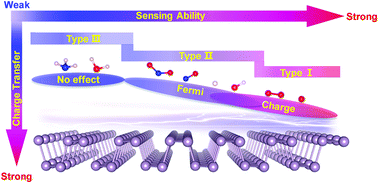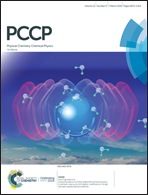Modifying the sensibility of nonmetal-doped phosphorene by local or global properties†
Abstract
Doping heteroatoms into phosphorene has attracted considerable attention due to its effectiveness in enhancing the stability and tailoring the electronic properties as well as sensing capability. In this work, we performed a density functional theory (DFT) calculation to study the effect of nonmetallic heteroatom dopants (X, X = Be, B, C, N, O, S, Se, Te, F, Cl, Br and I) on the stability and sensibility of X-doped phosphorene. We found that phosphorene structures doped with the 2nd period and VIA group atoms possess relatively high internal stability due to the effective X–P bonding. More interestingly, the interaction between P sites and small species can be modified effectively by a local property—the charge (Q) of P sites—and/or a global property—the Fermi level (EFermi) of X-doped phosphorene—depending on the charge transfer degree between the species and the P sites. For the species with dramatic charge transfer, the local Q of the P site plays the most important role. For the species with moderate charge transfer, the major determinant of sensibility is the local Q and global EFermi. This work reveals the relation between the properties of X-doped phosphorene and the physico-chemical parameters of X, including the electronegativity, atomic number, and X–P bonding strength, and provides a useful guideline for choosing the appropriate nonmetallic dopants to enhance the stability and sensibility of X-doped phosphorene towards special species.



 Please wait while we load your content...
Please wait while we load your content...